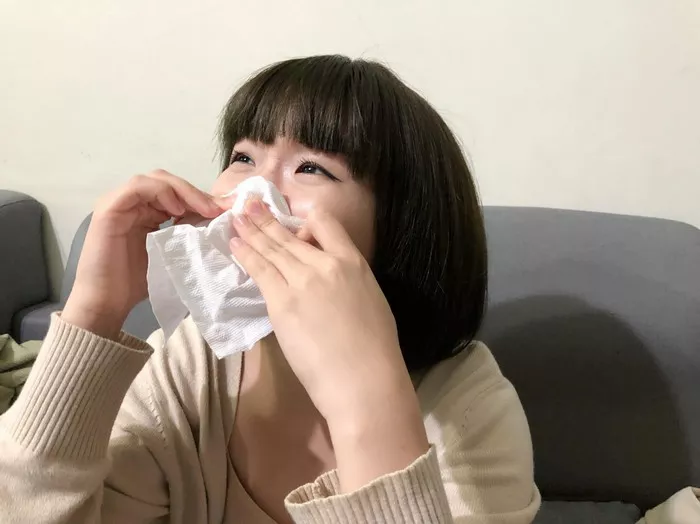Blackheads are one of the most common and frustrating skin issues, especially when they appear on the nose. These small dark spots may look minor, but for many people, they can feel like a major nuisance. Unlike pimples, blackheads are not inflamed, which means they usually do not hurt. However, their noticeable dark color against the skin can make them stand out, causing self-consciousness and a constant urge to remove them.
Understanding what causes blackheads on the nose is the first step toward solving the problem. The nose has more oil glands than many other areas of the face, which means it naturally produces more sebum. When this oil mixes with dead skin cells and clogs pores, it oxidizes upon exposure to air, turning black. Although blackheads are not necessarily caused by poor hygiene, maintaining proper skincare is essential for managing and preventing them. Removing blackheads safely and effectively requires a combination of proper cleansing, exfoliation, treatment, and prevention.
What Causes Blackheads on the Nose?
The skin’s surface is covered with pores that help regulate oil and sweat. When these pores become clogged with excess sebum and dead skin cells, a plug forms. Unlike whiteheads, which are closed over, blackheads stay open to the air. This exposure causes the material inside the pore to oxidize and turn black. Hormonal changes, genetics, and certain lifestyle factors can all contribute to the increased production of oil, making some people more prone to blackheads.
External factors also play a role. Heavy makeup, inadequate cleansing, pollution, and using comedogenic skincare products can all increase the risk of developing blackheads. Even touching the face frequently can transfer oils and bacteria from the hands to the nose, worsening clogged pores. Understanding these causes helps target the problem more effectively by addressing it from multiple angles.
Why the Nose Is Especially Prone to Blackheads
The nose is part of what dermatologists call the “T-zone,” an area that includes the forehead, nose, and chin. This region tends to be oilier than other parts of the face due to a higher concentration of sebaceous glands. The size and shape of the pores on the nose also contribute. Pores on the nose are generally larger, making them more susceptible to trapping oil and debris.
Additionally, because the nose sticks out, it is more exposed to environmental pollutants. Dust, sweat, and dirt can easily accumulate, combining with the natural oils of the skin. This unique combination of biological and environmental factors explains why blackheads are so stubborn on the nose and why special care must be taken to address them properly.
Daily Cleansing: The Foundation of Blackhead Prevention
Keeping the nose clean is one of the simplest yet most effective strategies to prevent and remove blackheads. A gentle, consistent cleansing routine helps to remove excess oil, dirt, and makeup that can clog pores. Using a mild cleanser twice a day ensures the skin stays fresh without being stripped of its natural protective barrier.
It is important to avoid harsh scrubbing or over-cleansing, as these can irritate the skin and trigger more oil production. Cleansing tools like soft facial brushes can enhance the cleaning process without causing damage. Look for products containing salicylic acid, a beta-hydroxy acid (BHA) that penetrates deep into pores and helps break down the material that forms blackheads.
Exfoliation: Clearing Away Dead Skin Cells
Exfoliation plays a crucial role in managing blackheads by removing the buildup of dead skin cells that can clog pores. Regular exfoliation helps keep the skin surface smooth and clear, allowing oils to flow naturally instead of becoming trapped. There are two main types of exfoliation: physical and chemical.
Physical exfoliation involves using scrubs or brushes to manually remove dead skin. However, aggressive scrubbing can cause micro-tears in the skin and should be avoided. Chemical exfoliation uses acids like salicylic acid or glycolic acid to dissolve the bonds between dead skin cells, making it a gentler and often more effective method. Exfoliating two to three times a week is usually sufficient, and over-exfoliating can backfire by irritating the skin and increasing oil production.
The Role of Steam in Blackhead Removal
Steam can be a powerful tool for loosening blackheads and making them easier to extract. When the skin is exposed to steam, the heat causes pores to expand slightly, softening the material inside and making it more accessible. A simple method is to drape a towel over the head while leaning over a bowl of hot water for five to ten minutes. Alternatively, a warm shower can achieve a similar effect.
After steaming, blackheads are more pliable, which can make removal methods like pore strips, comedone extractors, or gentle manual extraction more effective. However, care must be taken to avoid forcing blackheads out, as aggressive squeezing can damage the skin and lead to scarring. Gentle pressure and proper tools are key to safe extraction.
Safe Extraction Methods
Manual extraction of blackheads should be done cautiously to prevent skin trauma. After steaming the skin, clean hands thoroughly and wrap fingers in tissue to create a barrier. Gently press around the blackhead, applying even pressure from both sides. If the blackhead does not come out easily, it is better to stop rather than risk damaging the skin.
Using a sterile comedone extractor tool can make the process safer and more hygienic. These tools have a small loop designed to apply even pressure around the blackhead without puncturing the skin. After extraction, applying a soothing toner or antibacterial product helps calm the skin and reduce the risk of infection.
The Power of Pore Strips
Pore strips are a popular method for removing blackheads quickly and visibly. These adhesive strips are applied to the nose after wetting the skin and left to dry. When pulled off, they lift away the debris clogging the pores. While satisfying, pore strips do not prevent blackheads from forming again and should be used as a temporary measure rather than a long-term solution.
Overuse of pore strips can irritate the skin and may even cause broken capillaries. Limiting their use to once a week or less is best. For those with sensitive skin, gentler alternatives like clay masks or peel-off masks formulated for blackhead removal may be better options.
The Role of Clay Masks and Charcoal Masks
Clay and charcoal masks are excellent for drawing out impurities from the skin. Clay masks, especially those containing bentonite or kaolin, work by absorbing oil and tightening pores. Charcoal masks attract and bind impurities, helping to clear out clogged pores effectively.
Using a clay or charcoal mask once or twice a week can significantly reduce blackheads over time. These masks not only help with immediate removal but also regulate oil production, making the skin less prone to future blackhead formation. After using a mask, following up with a gentle moisturizer helps restore the skin’s balance.
Professional Treatments for Stubborn Blackheads
Sometimes, at-home methods are not enough to fully address blackheads, especially if they are deep or widespread. In such cases, professional treatments like facials, chemical peels, or microdermabrasion can be beneficial. Dermatologists and estheticians have access to stronger products and tools that can remove blackheads safely and effectively.
Chemical peels use stronger acids to exfoliate and renew the skin, while microdermabrasion physically removes the top layer of dead skin. Both methods help unclog pores and improve overall skin texture. Seeking professional help ensures that stubborn blackheads are addressed without damaging the skin or causing scarring.
How to Prevent Blackheads on the Nose
Prevention is always better than treatment when it comes to blackheads. Maintaining a consistent skincare routine is key. Cleansing twice daily, exfoliating regularly, and using non-comedogenic products help keep pores clear. Wearing sunscreen daily is also essential, as sun damage can thicken the outer layer of the skin, leading to more clogged pores.
Staying hydrated, eating a balanced diet, and managing stress levels contribute to overall skin health. Drinking plenty of water keeps the skin supple and less prone to oil imbalance. Reducing intake of sugary and greasy foods may also decrease oil production, minimizing the risk of blackheads. Skincare and lifestyle together create a strong defense against blackheads.
Conclusion
Removing blackheads on the nose requires patience, consistency, and a gentle approach. Understanding their causes, adopting a proper cleansing and exfoliation routine, using helpful tools like steam and masks, and knowing when to seek professional help are all parts of an effective strategy. By taking these steps and building healthy skincare habits, it is possible not only to remove existing blackheads but also to prevent new ones from forming.
Clear, smooth skin on the nose is within reach for everyone willing to invest the time and care needed. With the right techniques and persistence, blackheads can be managed effectively, restoring confidence and highlighting the natural beauty of the skin.
Related Topics































